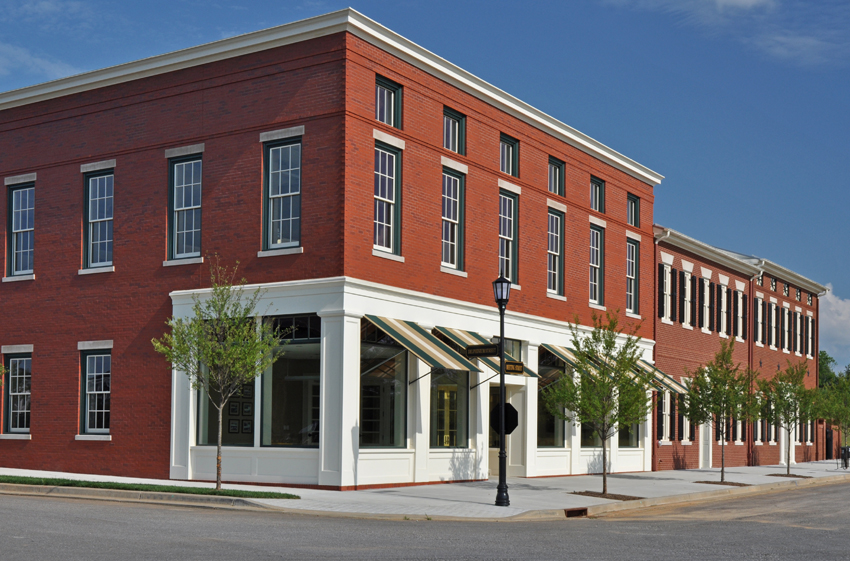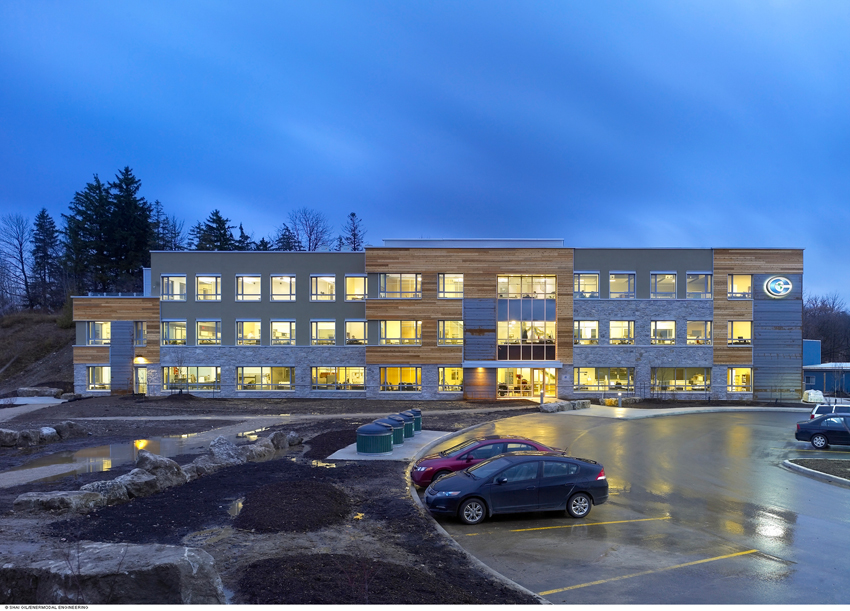Insulating Concrete Forms for Commercial Construction
Office Buildings
Many office buildings are owner occupied, so operating efficiency, low maintenance, and long-term value are key attributes for a building system. This is why many building owners are turning to ICFs. The low cost and reduced construction schedule of ICFs are attractive, but the fact that ICF buildings offer the most energy-efficient design option is a key factor in selecting ICFs. In addition, owner/tenants often like to offer their employees healthy buildings and demonstrate their commitment to sustainability by achieving LEED certification.
The energy codes, IECC and ASHRAE 90.1, consider ICFs to be mass walls with continuous insulation. Typical whole-wall ICF assemblies have an R-value ranging from R-24 to R-26 or even higher depending on the manufacturer. Because thermal mass reduces temperature swings and delays heat transfer, there are fewer spikes in temperature inside an ICF building. Thermal mass shifts energy demand to off-peak time periods when utility rates are lower, reducing costs further. Since the mass buffers indoor temperature fluctuations, it also contributes to improved occupant comfort.
The other benefit of ICF walls is that they are more airtight than wood- or steel-frame construction. In many cases, the air-infiltration rates are as low as 0.5 air changes per hour. Because there are no studs to interrupt the insulation, thermal bridging is eliminated, further improving energy performance. Another key factor in lowering construction cost is the ability to downsize the HVAC system. Energy analysis and building owner experience suggest energy savings with ICFs ranging from 20 percent to as much as 50 percent, depending on other energy-efficiency strategies employed for the building.
Education
Protecting children’s health, safety, and welfare along with providing comfortable learning environments are important factors when building a new school. Reinforced concrete and polystyrene, the two main components of ICFs, are inert and do not off-gas like other building materials, making them ideal for school buildings. The combination of insulation and thermal mass results in a building with more consistent temperature, which vastly improves occupant comfort. In addition, concrete and polystyrene are noncombustible, which means schools are safer.
Concrete is the most fire resistant of all construction materials used today, which means ICF construction offers a significant safety advantage over wood- and steel-frame construction. Concrete cannot burn like wood or soften and bend like steel under fire conditions. All ICF manufacturers involved in commercial construction have tested their products in accordance with standard fire-testing protocol, including ANSI/UL 263 and ASTM E119. Typically, 4-inch ICF walls achieve a 2-hour fire rating, 6-inch ICF walls achieve a 3- or 4-hour fire rating, and 8-inch and thicker ICF walls exceed a 4-hour fire rating. Generally the assemblies tested include reinforced concrete with a minimum compressive strength of 2,900 psi and 1⁄2-inch gypsum wall board on each side.
The EPS used in ICFs is flame retardant and approximately five times better than wood at stopping flame spread from materials burning in close proximity. EPS is completely unable to support a flame without an outside flame source. This is what provides the extra margin of safety for occupants and firefighters over wood and steel construction. EPS used for ICFs is strictly required to have a flame spread index of less than 25 and smoke developed rating of less than 450 when tested in accordance with ASTM E84 & ANSI/UL 723. ICF companies that maintain national evaluation reports from ICC-ES or other accredited testing agencies have all conducted a long list of materials tests to comply with national safety standards.












